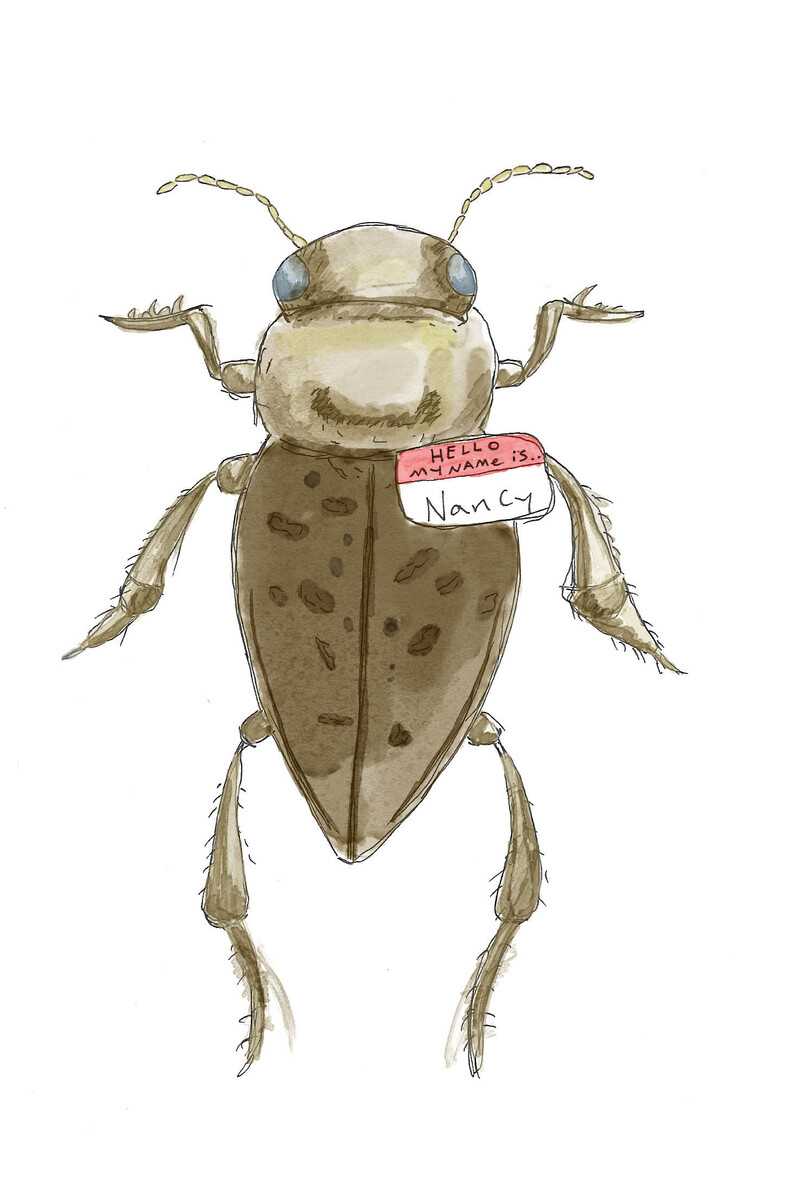The president of SUNY-ESF just discovered a beetle — and named it after his boss

Kelly O'Dowd | Contributing Illustrator
Wheeler named the beetle he discovered Zimpherus nancae, after SUNY Chancellor Nancy Zimpher.
The president of SUNY-ESF recently reported the discovery of a new genus and new species beetle — and named it after his boss.
The newly described beetle has the official name of Zimpherus nancae, named after State University of New York Chancellor Nancy Zimpher.
“The new species is elegant in appearance and graceful in motion, but the similarity to Chancellor Zimpher ends there,” said Quentin Wheeler, president of the State University of New York College of Environmental Science and Forestry, in a press release on the SUNY-ESF website.
A species named for a woman ends in ‘-ae’, and “nancae” is pronounced the same as Nancy, Wheeler said. Wheeler presented Zimpher with a framed image of the beetle during a meeting in Albany, according to the release.
“(I) felt (Zimpher’s) attentiveness, as well as her superb leadership of the State University of New York, deserved recognition,” Wheeler said. “For a taxonomist, what better way to say ‘thank you’ than with the name of a new species?”
Wheeler reported the discovery alongside Kelly Miller, an associate professor at the University of New Mexico, in the December 2015 issue of “The Coleopterists Bulletin,” according to BioOne.org.
The yellow-brown beetle is native to the Amazon Rainforest in southern Venezuela, near the border with Brazil. It was discovered among specimens collected from the rainforest, according to the release.
Despite its size of less than one-tenth of an inch in length, it is a ferocious predator of other aquatic invertebrates. Its largest relatives are nearly two inches in length and have been known to attack fish larger than themselves, according to the release.
The discovery of such viscous beetles can be vital in some areas of the world, including China, Thailand, New Guinea and Mexico, according to the release. Situations may become extremely dangerous when people eat predaceous diving beetles, according to the release.
With the naming of a new species comes a holotype, which is a single specimen that serves as an international standard of the species with which the name is forever associated. The holotype of “Zimpherus nancae” is located in the Venezuelan city of Maracay at the Central University of Venezuela’s Museo del Instituto de Zoología Agrícola Francisco Fernández Yepez, according to the release.
It is not uncommon to discover new species; about 50 new species are discovered each day, Wheeler said.
This is not the first experience Wheeler has had with discovery. He has named more than 100 new species, according to syracuse.com.
Wheeler has been known to get creative with the name-choosing process. In 2005, he and a colleague named three newly-discovered beetles after then-President George W. Bush, then-Vice President Dick Cheney and then-Defense Secretary Donald Rumsfeld. The beetles were named Agathidium bushi, Agathidium cheneyi, and Agathidium rumsfeldi, according to syracuse.com.
“I am passionate about species exploration,” Wheeler said. “… Earth’s animals and plants can teach us about better ways to meet human needs while at the same time conserving biodiversity.”




